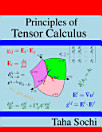Introduction to the Probability Theory
អំពីសៀវភៅអេឡិចត្រូនិកនេះ
However, the reader should notice that the book, in most parts, does not go beyond the basic probability and hence most subjects are presented and treated at their basic level. Accordingly, modest mathematical background knowledge is required for understanding most of the contents of the book. In fact, the book in most parts requires no more than a college or secondary school level of general mathematics. So, the intended readers of the book are primarily college (or A-level) students as well as junior undergraduate students (e.g. in mathematics or science or engineering).
An interesting feature of the book is that it is written and designed, in part, to address practical calculational issues (e.g. through sample codes and suggested methods of solution) and hence it is especially useful to those who are interested in the calculational applications of the probability theory.
The book can be used as a text or as a reference for an introductory course on this subject and may also be used for general reading in mathematics. The book may also be adopted as a source of pedagogical materials which can supplement, for instance, tutorial sessions (e.g. in undergraduate courses on mathematics or science).
អំពីអ្នកនិពន្ធ
The author of the book (Taha Sochi) possesses a diverse academic and research background. He holds a BEng in electronics engineering, a BSc in physics, a PhD in petroleum engineering, a PhD in crystallography, and a PhD in atomic physics and astronomy. He also worked as a postdoctoral research associate for several years. He published dozens of scientific research papers in many refereed journals and produced numerous academically oriented documents which are freely available on the world wide web. He also authored several books on tensor calculus, differential geometry, Lorentz transformations, general relativity, mathematics of variation, complex analysis, quantum physics and probability theory.







